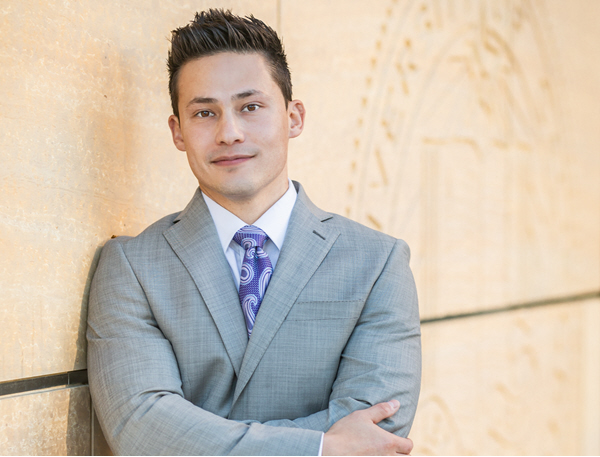An appealing alternative to many women because it avoids the introduction of foreign materials into the body and has the added advantage of reducing unwanted fat from areas like the abdomen, thighs, or hips.
NEWPORT BEACH, CA / ACCESSWIRE / March 1, 2024 / Breast augmentation through fat transfer is a procedure that is gaining popularity for those seeking a more natural approach to enhancing breast size. Unlike traditional breast implants, this method uses the patient's own fat, removed from other parts of the body via liposuction, which is then injected into the breasts. This technique not only increases breast size but also improves breast contours, providing a dual benefit from a single procedure. Although breast augmentation with fat transfer can offer a subtler increase in breast size compared to implants, usually by one or two cup sizes, it's a sought-after option for its natural feel and potentially lower risk of complications.

"Those considering this type of breast enhancement surgery should be informed about all aspects, including the procedure itself, the realistic outcomes they can expect, and the associated recovery time. It's a complex process that requires both surgical precision and artistic judgment to achieve the desired effect. Researching and making the correct choice of selecting a skilled and experienced board-certified plastic surgeon is crucial for optimal results," said Dr. Brandon Richland, MD.
Dr. Richland is a well-known and respected Board-Certified Newport Beach Plastic Surgeon serving patients in the Orange County / Southern California area. Specializing in most cosmetic and reconstructive surgeries, he is dedicated to helping both women and men look and feel their absolute best. Read breast surgery reviews of patient experiences with Dr. Richland.
Breast Fat Transfer Considerations
When considering a breast fat transfer, patients weigh the benefits and drawbacks, and often look at before-and-after photos to set realistic expectations for the procedure's outcome.
Pros and Cons of Fat Transfer vs. Implants
Pros:
- Natural Appearance: The use of the patient's own fat results in breasts that look and feel natural.
- Reduced Scarring: Tiny incisions used for fat injections lead to minimal scarring.
- Dual Benefits: Patients slim down areas where the fat is harvested, such as the abdomen or thighs.
Cons:
- Risk of Absorption: Some of the transferred fat may be absorbed by the body, reducing breast volume over time.
- Limited Volume Increase: Generally, this method provides a subtle increase in breast size, commonly around one cup size.
- Potential Risks: Includes cysts, infection, and fat necrosis.
Breast Lift Techniques
Breast lift techniques have evolved to address the concern of sagging while aiming for a more natural-looking breast contour. These procedures have become increasingly sophisticated, offering solutions that can reduce complications and enhance outcomes.
With Fat Transfer
The breast lift technique utilizing fat transfer not only elevates the position of the breasts but also adds volume with the patient's own fat. This approach begins with liposuction to harvest fat from other areas of the body, which is then purified and injected into the breast. Surgeons are careful to inject small amounts of fat strategically for optimal blood supply and integration, enhancing the breast's shape while tackling sagging issues.
The advantage here is that it combines contouring of both the donor site and the breasts, which can lead to a very natural-looking augmentation. However, it's important to note that the amount of lift achievable solely through fat transfer might be limited.
Fat Transfer Process
The fat transfer process, commonly used in cosmetic surgery, is a method that involves moving fat from one part of the body to another. A patient typically undergoes liposuction to extract the fat, which is a key step in the process. This fat is then purified and prepared for fat grafting.
Here's a simple breakdown of the stages:
- Harvesting: Fat is removed from the donor area (e.g., abdomen, thighs) using liposuction.
- Purification: The fat cells are separated from the liquid and cleansed.
- Transfer: The clean fat cells are injected into the breasts.
A plastic surgeon performs the procedure, meticulously injecting the fat into the breast area to achieve the desired volume and contour. For patients interested in subtle natural augmentation, this is an appealing option since it uses the body's own tissue.
Fat injection success largely depends on the technique used and the individual's body. Not all of the transferred fat survives, so sometimes multiple sessions are needed. Patients considering this should discuss the likelihood of achieving their desired outcome with their surgeon.
Here are some of the advantages:
- Use of one's own tissue.
- Dual benefit of reducing fat in another area.
- No risk of implant-related complications.
However, it's important to have realistic expectations and understand that while this procedure enhances breast size, the increase is usually moderate compared to implant-based augmentation.
Breast Augmentation Via Fat Transfer
Breast augmentation can be achieved not only with traditional breast implants but also through a method known as fat transfer breast augmentation. This technique is becoming increasingly popular for individuals looking to enhance their breast size and shape in a more natural way.
In fat transfer breast augmentation, a patient's own fat is used to increase the volume of their breasts. Fat is harvested through liposuction from areas with excess fat such as the abdomen or thighs. After processing and purifying the harvested fat, it is then carefully injected into the breasts to add volume and contour. This procedure not only increases breast size but can also address volume loss, which is common after weight loss or pregnancy.
However, the amount of volume increase with fat transfer is typically more subtle compared to augmentation with implants. The final result often depends on the body's ability to integrate the transferred fat, and sometimes multiple sessions are necessary to achieve the desired outcome.
Patients considering this procedure should consult with a qualified cosmetic surgeon to understand the specific risks and expected results.
Long-Term Outcomes
Patients should have a clear indication of the permanent nature of their fat transfer breast augmentation. The transferred fat that survives the initial resorption phase, which typically lasts a few months, generally remains long term. However, it's important to note that significant weight fluctuations can affect the volume of transferred fat.
Permanent results may be somewhat influenced by the body's natural aging process and changes in hormonal status, but the overall shape and enhancement are typically maintained. Patients may need to monitor for signs of fat necrosis, where the fat cells die, creating firm lumps. Likewise, calcification can occur, presenting a diagnostic challenge as these can sometimes mimic the appearance of breast cancer on mammograms.
Any lumps that develop as a result of the procedure are usually palpable and can be detected during routine self-examinations or clinical breast exams. In cases where such irregularities persist, imaging tests and follow-up with a healthcare provider may be recommended.
Some loss of volume is to be expected as the body absorbs some of the transferred fat, the overall improvements in breast size and shape are typically retained. Further treatments may be sought by some individuals who desire adjustments or enhancements down the line.

Image Credit: Kanashkin / 123RF.
Recovery and Aftercare
After undergoing a breast augmentation fat transfer, patients typically experience a recovery period where careful aftercare is necessary to ensure optimal results and comfort.
Recovery Time: Individuals can generally expect a recovery timeline of about two to five weeks. Within this time frame, most will notice a significant reduction in swelling and begin to see the results of their procedure. It's usually advised that patients can resume regular routines, such as work and light household duties, approximately two weeks post-surgery.
Pain Management: It is not uncommon for patients to experience some pain and discomfort following the procedure. They are frequently prescribed pain medication to help manage this aspect of recovery. Additionally, doctors may advise over-the-counter options or provide a specific pain management plan tailored to the individual's needs.
Scarring and Swelling: To minimize scarring and swelling, patients might be directed to wear compression garments, which can also aid in contouring the area from which fat was harvested.
- Medication: Follow the prescribed regimen.
- Rest: Ensure plenty of sleep and avoid strenuous activities.
- Hydration: Drink plenty of fluids to aid the body's healing process.
- Follow-up appointments: Attend all scheduled sessions with the surgeon.
For a successful breast augmentation recovery, patients are encouraged to adhere strictly to the provided aftercare instructions and communicate regularly with their surgeon about any concerns or questions that may arise during the healing process.
Candidate Assessment
When considering breast augmentation via fat transfer, certain factors make an individual an ideal candidate.
Stable Weight: Candidates should possess a stable body weight, as significant fluctuations can affect the durability and appearance of the fat transfer results.
Good Health: A strong bill of health is vital. Individuals should not have any significant medical issues that can complicate surgery or healing.
Medical History: A thorough evaluation of the candidate's medical history is conducted to ensure that a fat transfer is a viable and safe option for them. It's imperative that the candidate is transparent about their medical history, including any allergies or past surgeries.
- Good Candidate: They typically seek a modest increase in breast size and maintain realistic expectations about the results.
Ideal Candidate: They have a sufficient amount of donor fat and their breasts already exhibit an appealing shape and skin tone, as highlighted in the insights from RealSelf.
A candidate's lifestyle and goals are also taken into consideration. A desire for natural-looking enhancement without the use of implants is common among good candidates.
Breast Surgery Cost and Considerations
The cost for fat transfer breast augmentation is a significant factor. The procedure typically averages around $9,275, but can range from $4,378 to $18,000 for more extensive augmentations. These figures may vary based on the surgeon's location and level of experience.
Financial Considerations:
- Average Cost: Around $9,275
- Cost Range: $4,378 to $18,000
- Factors Influencing Cost: Surgeon's experience, procedure extent.
Patients must maintain a stable weight pre- and post-procedure to ensure the durability of the augmentation. Fluctuations in weight could negatively impact the results, as the transferred fat behaves like fat in other body areas.
Having realistic expectations is crucial. Surgeons can help patients understand the potential outcomes, including the limited size increase and the more natural look compared to implants.
Insurance typically does not cover fat transfer breast augmentation since it's considered a cosmetic procedure. Patients should consult their insurance providers to understand any financial obligations.
Considerations for Candidates:
- Stable Weight: Essential for maintaining results.
- Realistic Expectations: Understanding potential outcomes is important.
- Insurance Coverage: Generally not provided for cosmetic procedures.
Prospective patients should consider their lifestyle and cosmetic goals when exploring this surgical option. Consulting with a board-certified plastic surgeon can help clarify the process, cost, and expected results tailored to individual circumstances.

About Dr. Brandon Richland, MD:
Dr. Brandon Richland, MD is a respected Board Certified Licensed Plastic Surgeon in Orange County / Southern California specializing in cosmetic and reconstructive surgeries. Driven by his passion for medicine, Dr. Richland obtained his Doctor of Medicine (M.D.) degree from the prestigious program at Saint Louis University (SLU) School of Medicine in 2013. His exceptional skills were recognized when he received the McGraw Hill / Lange Medical Student Academic Achievement Award, and graduated top of his class with Honors. For his undergraduate degree, he attended University of California, Los Angeles (UCLA) and graduated with Honors in 2009.
To further enhance his surgical expertise, Dr. Richland completed his Residency in Plastic Surgery at the University of California, Irvine (UCI) from 2013 to 2019 earning the Academic Achievement Award twice during this period. A total of 14 years in dedicated schooling and medical residency. Dr. Richland is actively involved with healthcare and medical societies, as a Diplomate of the American Board of Plastic Surgery, a member of the American Society of Plastic Surgeons, American Society of Aesthetic Plastic Surgeons, and the California Society of Plastic Surgeons.
Located in one of these Orange County (OC) / Southern California cities?
Aliso Viejo, Anaheim, Brea, Buena Park, Costa Mesa, Coto de Caza, Cypress, Dana Point, Fountain Valley, Fullerton, Garden Grove, Huntington Beach, Irvine, La Habra, La Palma, Laguna Beach, Laguna Hills, Laguna Niguel, Laguna Woods, Ladera Ranch, Lake Forest, Los Alamitos, Mission Viejo, Newport Beach, Orange, Placentia, Rancho Santa Margarita, San Clemente, San Juan Capistrano, Santa Ana, Seal Beach, Stanton, Tustin, Villa Park, Westminster, or Yorba Linda?
Plastic Surgeon Dr. Brandon Richland, MD and his Cosmetic Aesthetics Team are ready to help you look and feel your absolute best. Elevate your confidence and self esteem levels to unfathomable new heights. A warm and engaging Team of carefully selected Aesthetics Professionals will make you feel calm, cool, collected, and right at home throughout your entire consultation and surgery process.
Schedule your in-person consultation in our modern and luxurious offices in either Fountain Valley, CA (Main HQ) or our Newport Beach, CA office. Live outside of Southern California or short on time? For your convenience, Virtual Consultations are also available.
CONTACT:
Dr. Brandon Richland, MD Inc.
Summer Mariorenzi
Media Relations
714-241-0646
summer@richlandmd.com
For Your Personalized First-Class Cosmetic and Aesthetics Experience, Schedule Your In-Person or Virtual Consultation:
https://www.richlandmd.com/contact-us/
Medical Disclaimer: The information shared is intended for informational purposes only and should not be construed as medical advice. Every individual and patient is different. Before considering any treatments or surgical procedures, be sure to consult with an experienced licensed healthcare provider to discuss the appropriateness and safety of any procedures or treatments based on your individual health and medical history.
SOURCE: Dr. Brandon Richland, MD
View the original press release on accesswire.com
